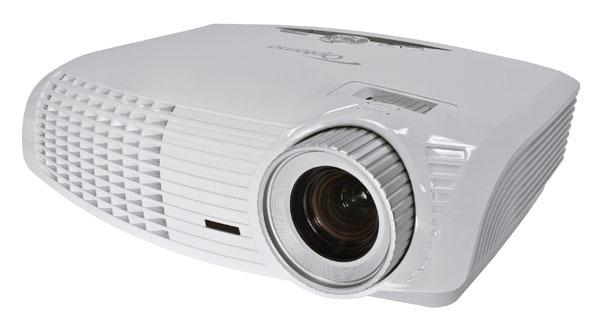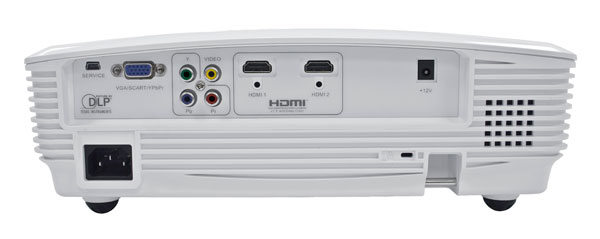Optoma HD20 DLP Projector

In some respects, the Optoma HD20 is an exceptional value, providing a razor-sharp 1080p image for just about as little money as any projector I know of. It's overall detail and color are excellent via HDMI, and it offers extensive controls, surprisingly advanced features, and a well-organized user interface. However, the lack of lens shift makes placement difficult without invoking the keystone control that can degrade the detail a lot. And even if you solve that problem, the shadow detail is poor, which causes dark scenes have large areas of solid darkness rather than subtle low-level details. Finally, at the largest image size I could manage in our studio given the lack of lens shift, the black level was quite high, which means the black of space was dark gray and letterbox bars were obvious. For better performance in this critical area, a larger image is a must.
Features
With a native resolution of 1920x1080, the HD20 can display virtually all Blu-rays and most HD broadcast channels without scaling, which is why I recommend 1080p displays even for small screen sizes. As with all single-chip DLP displays, you might see what's commonly called "rainbow artifacts" in scenes with bright highlights on dark backgrounds—if you move your eyes around while viewing such a scene, you might see momentary rainbows near the bright highlights. Some viewers are more susceptible to this than others.

Unfortunately, the HD20 provides no lens-shift controls, which would allow you to place the projector in a variety of positions and move the image to align with the screen. As it is, the projector must be placed in a very specific position—horizontally centered and at a specific distance well below or above the center of the screen. Putting it below the screen is impractical for most installations, so the best placement is mounted on the ceiling. If you must place it off center, electronic keystone correction can "square up" the image, but this also degrades the image quality, especially the apparent detail, so I strongly recommend against using it if at all possible.
The HD20 provides several rare features, especially in a projector at this price level. For example, separate overscan and masking controls let you disable image-degrading overscan while hiding the "digital hash" at the top edge of some broadcast channels. Extensive gamma controls let you adjust how the image gets brighter as the input signal goes from black to white, which is needed to improve shadow detail (though it doesn't help as much as I'd like).
Another rare feature is the HD20's ability to remember its settings for different devices connected to the same input. If you have several devices connected to an A/V receiver and one connection from the AVR to the projector, you can optimize the projector's controls independently for each device, and it will recall those settings when you select a device from the AVR. Finally, the internal video processor allows the projector to be used with an anamorphic lens to display 2.35:1 movies on 2.35:1 screen. However, such a lens is at least five times as expensive as the projector itself, so I doubt any owners will use this feature.

Ergonomics
As with most projectors, the HD20's remote is small, and the button layout is well-organized with dedicated input-selection buttons, which I wish more TV remotes had. It also provides dedicated buttons to directly access many often-used functions, which is great. The remote is backlit, but only cryptic icons on the buttons can be seen in the dark; the text labels are on the remote body and not illuminated. Also, the illumination is bright blue; it should be red to avoid affecting dark-adapted vision. Another drawback is the lack of an Exit button to exit the menu directly; as it is, you must back out of the menu one level at a time. On the plus side, its infrared beam is plenty strong enough to bounce off the screen and back to the projector.
- Log in or register to post comments




































































